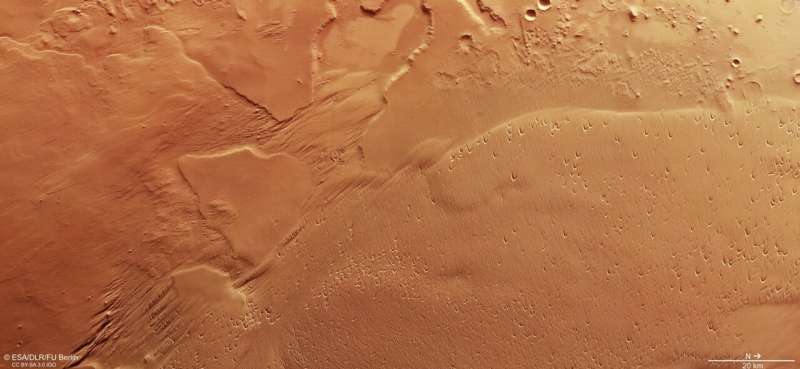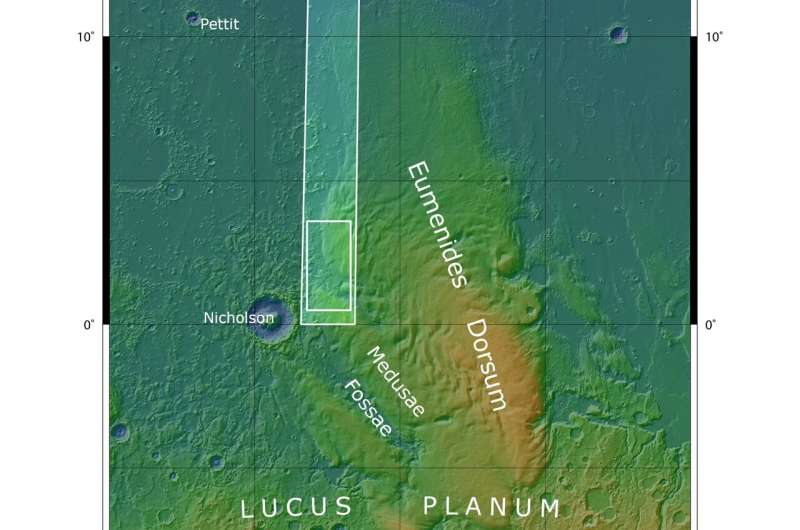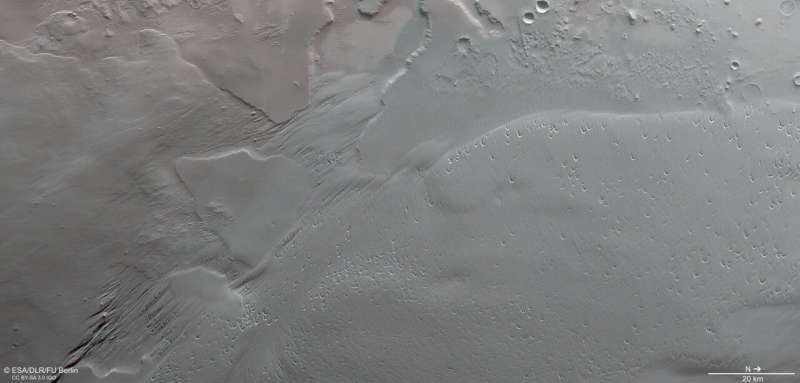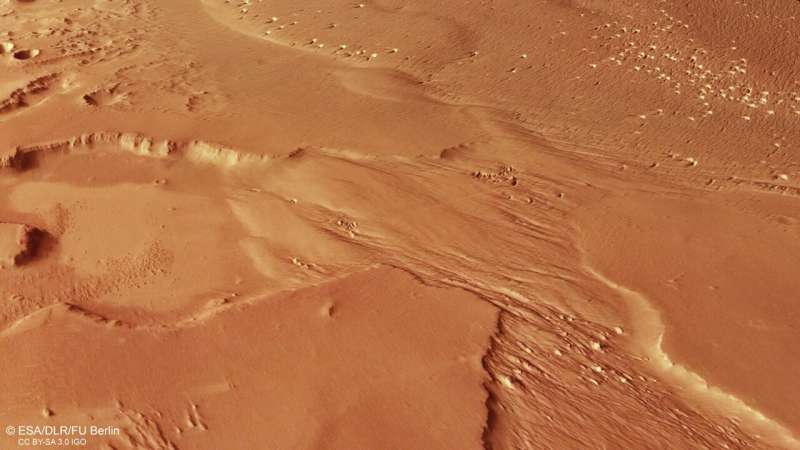Wind-sculpted feature on Mars is an extensive dust factory

This image from ESA's Mars Express shows part of possibly the largest single source of dust on Mars: a wind-sculpted feature known as the Medusae Fossae Formation, or MFF.
The MFF is not only a veritable dust factory, but also remarkably extensive—it is the largest sedimentary deposit on the planet and stretches out discontinuously for more than 5,000 km, covering an area about the size of India. It is named for the Greek mythological Gorgon Medusa, who was able to turn those who looked into her eyes to stone, with the suffix 'fossae' being Latin for trenches or hollows.
The formation is found along the boundary between Mars' southern highlands and northern lowlands (known as the martian dichotomy), and sits between the planet's two most prominent volcanic regions (Tharsis and Elysium). It also contains the Eumenides Dorsum mountain range, the edges of which can be seen in the gentle elevation extending out of the bottom right of the frame (northeast).
This change in elevation can be seen especially clearly in the accompanying topographic map of this slice of martian surface.
Easily eroded
Many different surface features constitute the MFF, which appears to be easily eroded by wind. Its surface alternately appears to be smooth and gently undulating, as seen to the upper left of the frame (southwest), wind-sculpted into kilometer-long ridges and grooves known as yardangs, as seen to the center and lower-left (southeast), and pitted with small, crescent-shaped depressions, visible to the lower right (northeast).

Wind is a powerful sculptor on the Red Planet—as well as here on Earth. Mars Express has spied several other landscapes on Mars that have been significantly shaped by wind, such as Nili Fossae, Arabia Terra, Syrtis Major, southern dunes, and Schiaparelli crater.
In fact, this region likely formed as a result of wind moving material around on Mars' surface. The MFF is thought to consist of ash released by the volcanoes in the nearby Tharsis region—including Olympus Mons, the largest volcano in the Solar System—that has been deposited either through the air or via fast-moving 'pyroclastic' flows of lava, gas and rocky debris.

Eddies and blowouts
The aforementioned crescent-shaped depressions are also the doing of martian winds. These saucer- or trough-shaped hollows, known as blowouts, are apparently carved into the sand by wind erosion. To create a blowout, sand-laden wind whips along and erodes the smooth surface until it hits an obstacle—a buried object such as a rock or more resistant patch of sediment, for example. The wind is then forced around and beneath the object, creating an eddy, before finally heading back upwards, lifting sand with it as it goes.

Wind erosion is thought to be the latest stage of erosional processes acting on the MFF. This is evidenced by the general lack of craters seen on the formation's surface; if wind erosion had occurred long ago only, we would expect to see more recent craters atop the wind-sculpted terrain. Overall, the fact that only a few craters are visible here, sitting alongside underlying older rock that has subsequently been covered and draped in dust, implies that the region's surface is young.
Exploring the surface features and geology of Mars is a key objective of Mars Express. Launched in 2003, the spacecraft has been orbiting the Red Planet for nearly two decades; it has since been joined by the ESA-Roscosmos ExoMars Trace Gas Orbiter (TGO), which arrived in 2016, while the ExoMars Rosalind Franklin rover and its accompanying surface science platform are scheduled for launch in 2022. Together, this fleet of martian explorers is working towards a fuller understanding of Mars and its intriguing landscapes.
Provided by European Space Agency





















